
Ranking in a competitive niche can feel like an uphill battle. But with the right strategies, it's entirely possible to start ranking for the target keywords in your niche.
In this post, we will look at 6 powerful tactics that you can use to obtain higher rankings in a competitive niche. You will also learn about the things you should definitely avoid doing that could actually harm your rankings and undermine your efforts for higher rankings.
We'll also share some insights from top marketers and digital agency founders on how they rank websites in a competitive industry.
I'd like to thank the following people for adding their insights and contributions:
- Brandon Schroth, Founder @ ReporterOutreach, San Diego, United States
- Josh Boltstad, CEO @ Niche Ranker, Alberta, Canada
- Brandy Hastings, SEO Strategist @ SmartSites, Paramus, United States
- Kim Barloso, Demand Generation Content Specialist @ Thrive, Dallas, United States
What Defines a Competitive Niche?
To succeed and rank in a competitive niche, it’s crucial to understand what sets a competitive niche apart from a non-competitive one.
Established Players
One of the primary factors that define a competitive niche is the presence of established players.
These players typically have a significant amount of high-quality content, an organice backlink profile with links from authoritative sites, and a large, loyal audience.
In the fitness industry there are many established players such as Bodybuilding.com. The site offers a broad range of content, including workout plans, nutrition advice, and product reviews, and has built a sizeable community through its forums and social media presence.
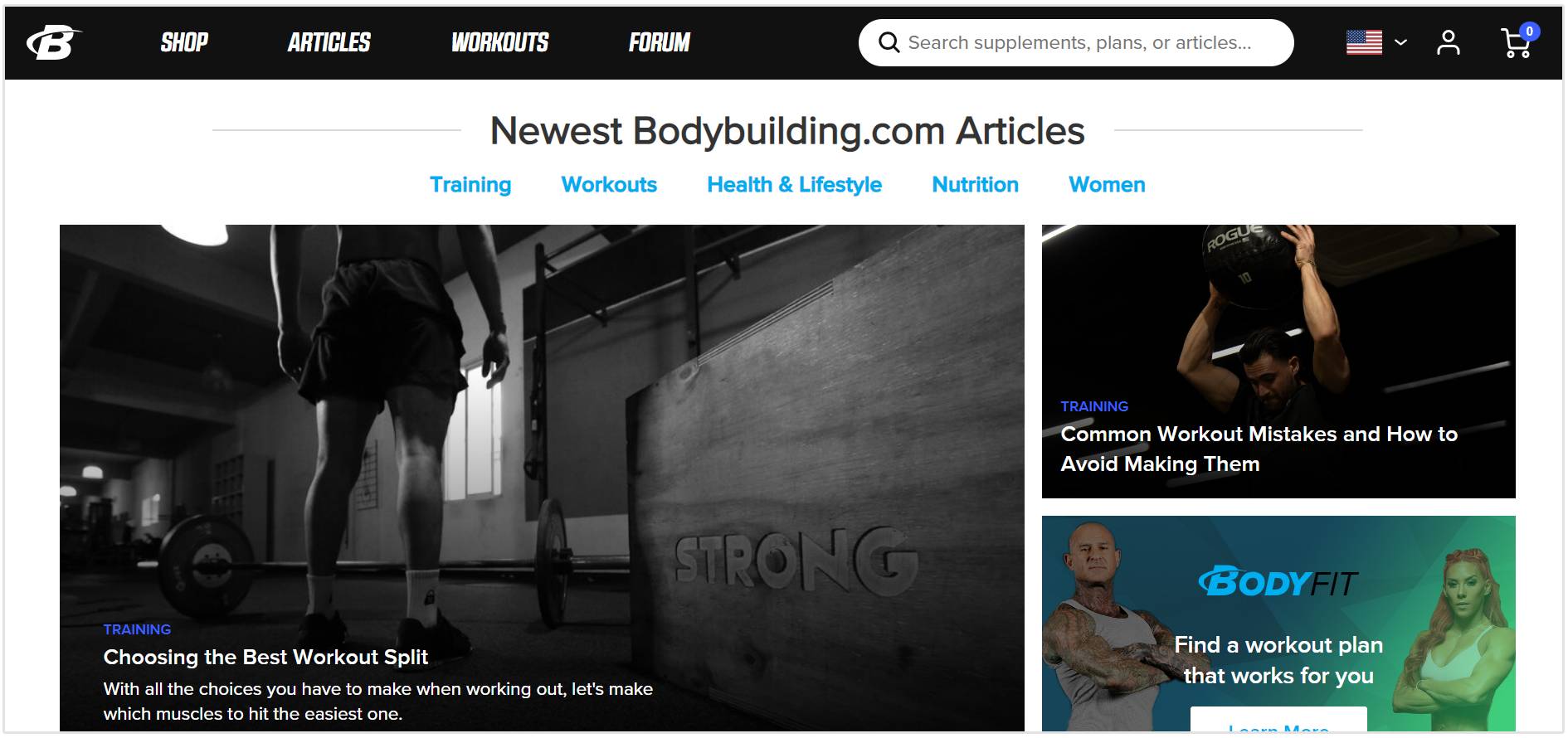
This website is definitley a leader in its niche, as you can see they've got an impressive backlink profile, with a Domain Strength of 88 and millions of backlinks.
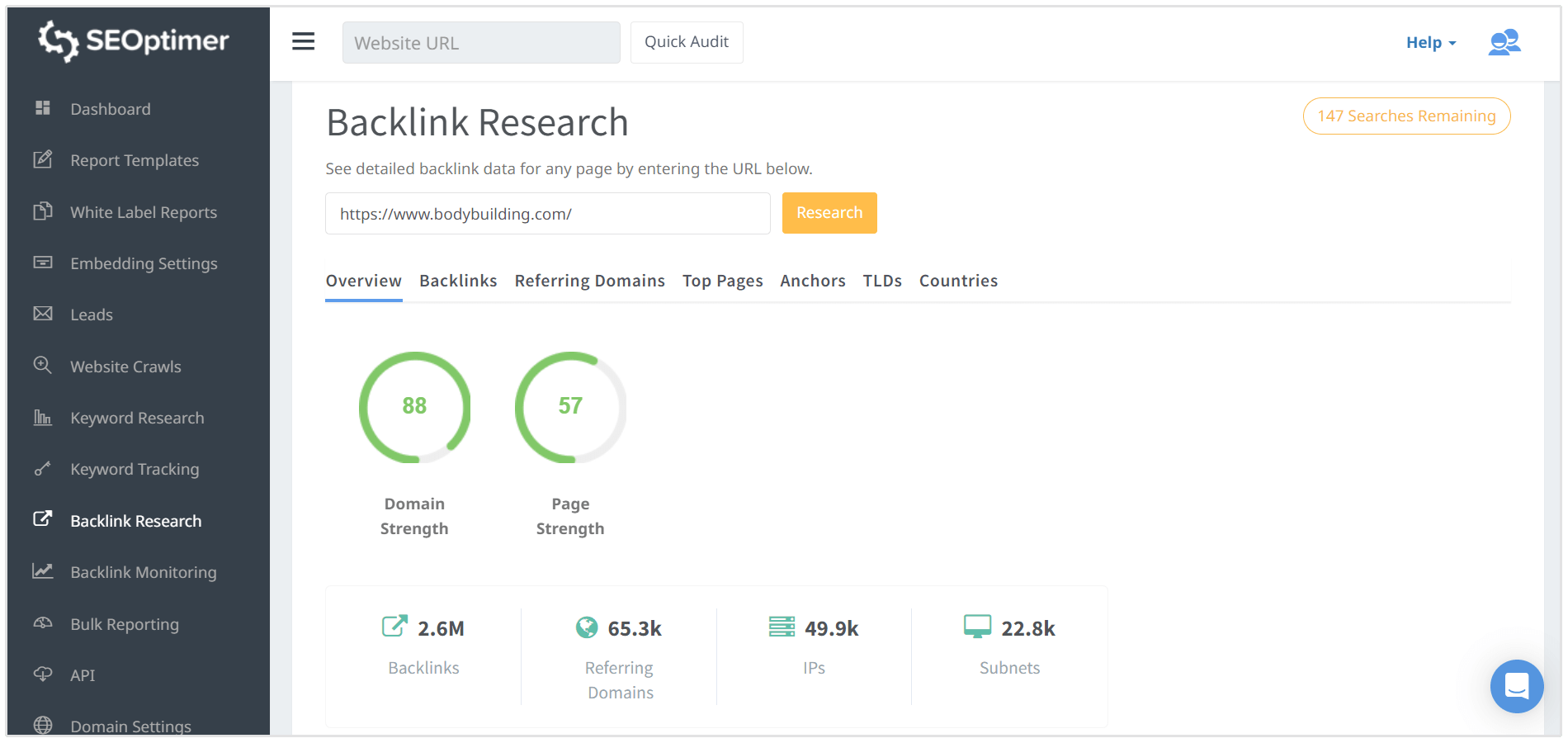
High Keyword Difficulty
Keywords with high difficulty scores indicate a lot of competition and effort needed to rank well for those terms.
This difficulty is typically assessed by considering several factors, such as the number of websites competing for the keyword and the backlinks they have.
High Search Volume
High search volume is another key factor that contributes to the competitiveness of a niche.
When a keyword or set of keywords has a high search volume, it means that a large number of users are searching for those terms regularly.
Naturally, this attracts more competition, as businesses recognize the potential to reach a wider audience and drive more traffic to their sites.
For instance, the keyword "how to make money online" has a lot of search volume, probably because a lot of people are interested in this topic. I just added that keyword to our Keyword Research tool, and the results confirm my suspicion.
The search volume for this keyword is more than 100K, so that's a lot of monthly search volume.
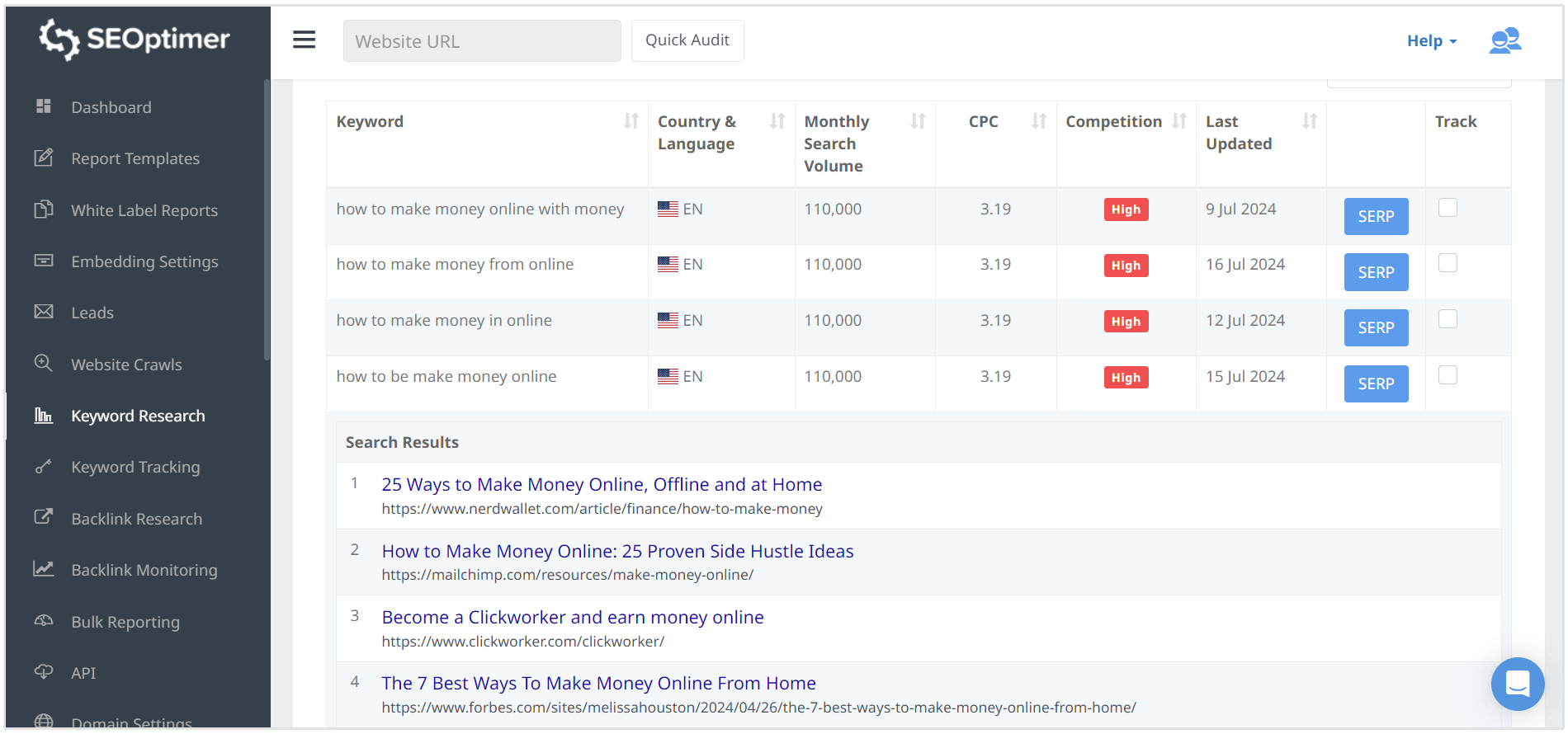
But then if you look at the SERPs for this keyword, you'll see that you'll be facing tough competition from established websites such as Nerdwallet, Forbes, Mailchimp, and others.
Now that you know what factors contribute to the competitiveness of a niche, let's look at some of the tips that you can follow to rank in a competitive niche.
6 Tips to Rank in a Competitive Niche
1. Understand the Competitive Landscape
Understanding the competitive landscape is the first step you should take when looking to rank in a competitive niche.
By analyzing your competitors, you can identify their strengths and weaknesses, uncover opportunities, and gain insights into what is working in your niche.
SEO competitive analysis is effective and efficient because you don’t have to start your research from scratch. You can see what other competitors are doing and apply it to your own SEO efforts.
- Kim Barloso, Demand Generation Specialist at Thrive Agency
Here are some ideas on how to perform a competitive analysis for SEO:
- Identify Your Main Competitors: Make a list of your main competitors to analyze their strategies.
- Analyze Competitor Content: Examine the type of content your competitors are producing. Look at the topics they cover, the depth of their articles, the keywords they target, and how frequently they post new content. This will help you identify content gaps and opportunities for creating superior content.
- Evaluate Backlink Profiles: You can use SEOptimer's Free Backlink Research tool to analyze the backlink profiles of your competitors. Look at the number of backlinks they have, the quality of those backlinks, and the diversity of their link sources. This will give you insights into how you can build your backlink strategy.
- Assess On-Page SEO: Review your competitors' on-page SEO elements, including their title tags, meta descriptions, header tags, and URL structures. Identify best practices and areas where you can improve your own on-page optimization.
2. Produce Better Content than Competitors
This tip might seem pretty obvious, but if you truly want to rank in a competitive niche, your content needs to be top-tier.
Creating superior content involves not just producing more information, but delivering it in a way that is more engaging, insightful, and valuable than anything your competitors offer.
Here are some ideas that you can follow to ensure that you continually publish better content than your competitors.
These aren't your typical tips, for instance, I'm not going to suggest doing in-depth keyword research since your competitors are likely already doing that and you should too.
- Use your target keywords strategically, but avoid keyword stuffing. I'd suggest using the target keyword within the first sentence of each blog post, and then scattering it all throughout the page.
- Optimize the on-page elements like headings, meta descriptions, and image alt texts to improve search engine rankings.
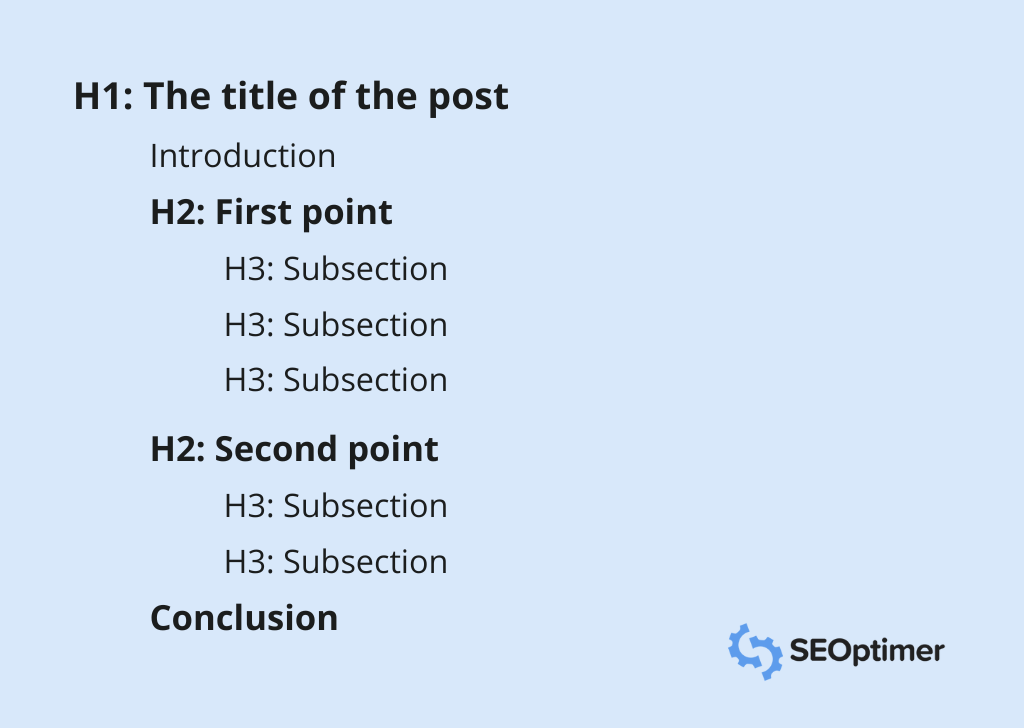
- Break up long blocks of text with subheadings, bullet points, and images.
- Try to use short paragraphs, concise language, and a clear structure to make your content easy to read and digest.
- Vary your content with visuals such as images, videos, infographics, and interactive elements.
- Keep your content fresh and relevant by regularly updating it with new information, trends, and insights. This shows search engines and readers that your site is active and current.
- Adding statistics and quotes from authority figures can give your content more authority. And if you're using AI to create content, statistics and quotes can make your content more "human."
You also want to stick to publishing in-depth, evergreen content instead of "trend-based" content. This is because evergreen content doesn't expire, unlike news-driven posts.
Evergreen content stays relevant and keeps attracting traffic over long periods. Unlike trend-based material, evergreen articles provide continuous value addition throughout their life cycles within the web space they occupy.
- Brandon Schroth, ReporterOutreach
3. Focus on High Quality Backlinks
As you're well aware, backlinks play a very important role in determining your website's authority and ranking.
However, it’s not just about having a ton of backlinks; the quality of these backlinks is far more important than the quantity.
High-quality backlinks from reputable, authoritative sites signal to search engines that your content is valuable and trustworthy, thereby boosting your site's credibility and rankings.
If you look at any of the pages ranking in a competitive niche, then you'll see these pages have got links from some of the most well-known websites on the web.
Let's look at the email marketing niche as an example. One of the most well-know tools in that niche is Mailchimp.
If you look at their backlink profile (screenshot below), you'll see they've got premium quality links from some top websites including WordPress, Godaddy, Wix, Microsoft, and more.
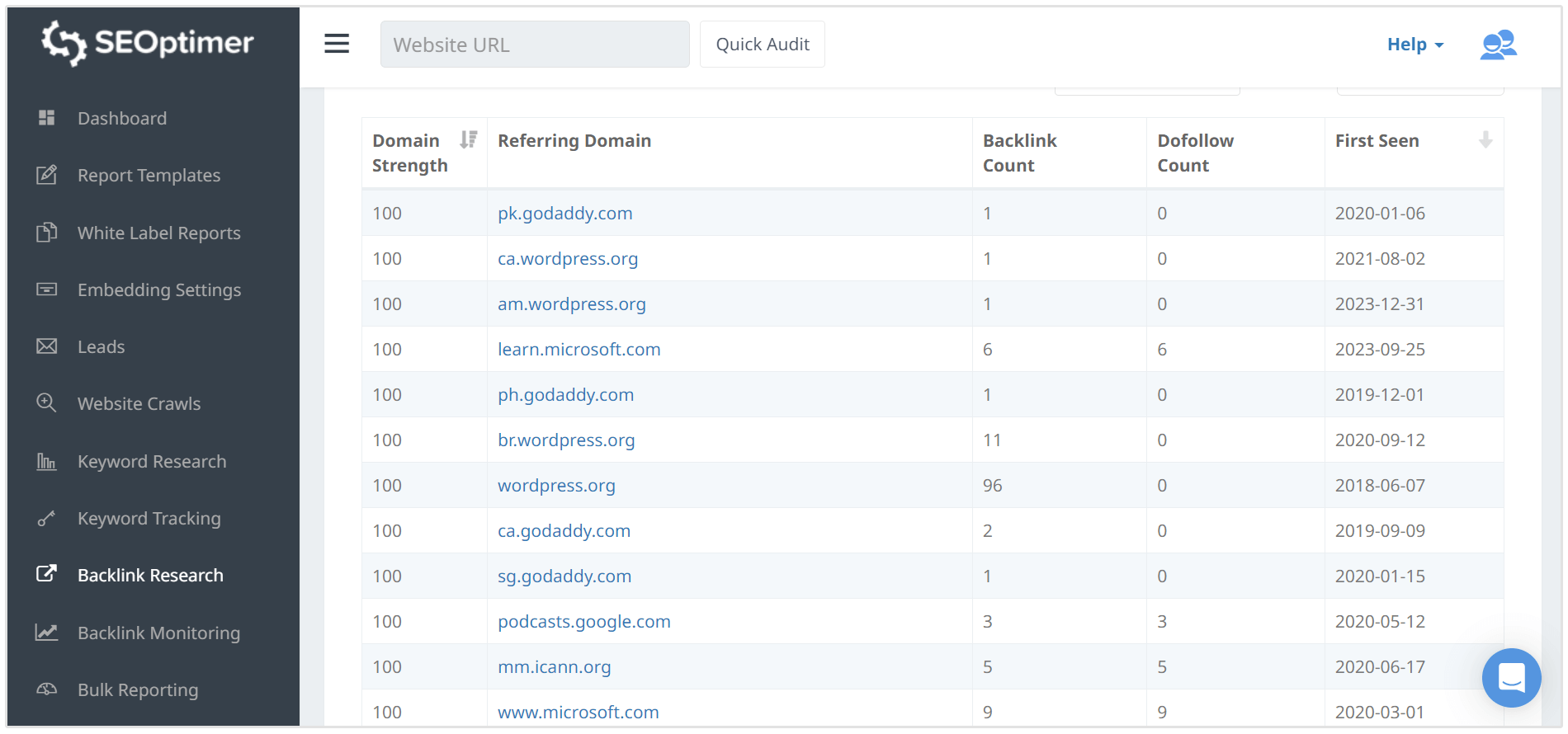
If I were to try and rank in any competitive niche, I'd implement a link-building strategy that aims to build high-quality links only. You can also look at your comeptitor's link profile to try and reverse engineer their link-building strategy, or steal their backlinks.
I employ strategies like guest blogging, outreach for link placements, and creating shareable infographics. Building relationships with influencers and industry leaders can also lead to valuable backlinks.
- Josh Bolstad, Niche Ranker
4. Targeting a Broad Spectrum of Keyword Types
Targeting different types of keywords is helpful for trying to rank in a competitive niche.
By diversifying your keyword strategy, you can capture a wider audience and address various search intents, ultimately driving more traffic to your site.
Focusing only on high-competition keywords might not always yield the best results. While they can drive significant traffic, they are also the hardest to rank for.
By incorporating a mix of long-tail keywords, question-based queries, and niche-specific terms, you can tap into less competitive but highly relevant search traffic.
5. Perfect Your Site’s Technical SEO
When you're trying to rank in a competitive niche, you need to ensure your technical SEO is in order.
You can be guaranteed that the sites in a competitive niche have their technical SEO honed and optimized to the full.
Here are some key technical SEO aspects to focus on:
- Fast-loading pages provide a better user experience and are favored by search engines. Compress images, leverage browser caching, and minimize JavaScript to enhance load speeds.
- Use a CDN to distribute your website content across multiple servers worldwide, reducing latency and improving load times for users globally.
- Use clear, descriptive URLs that include target keywords. Avoid long, complex URLs with unnecessary parameters.
A vital aspect of technical SEO is making sure your website has no indexing or crawling issues. If Google can't crawl your website, then your pages can't get indexed, which means you can't rank for relevant searches.
Search engines need a clear and logical structure to efficiently crawl and index your content.
Optimizing your site's architecture is essential for better crawlability and, in turn, higher rankings.
- Brandy Hastings, SEO Strategist at SmartSites
Ensure your robots.txt file allows search engines to crawl important parts of your website while blocking access to sections you don’t want indexed.
It's important to monitor your site's technical SEO regularly. Here's where SEOptimer can help you.
Our SEO audit and reporting tool runs more than 100 checks on your site's SEO, which includes the technical elements of your SEO.
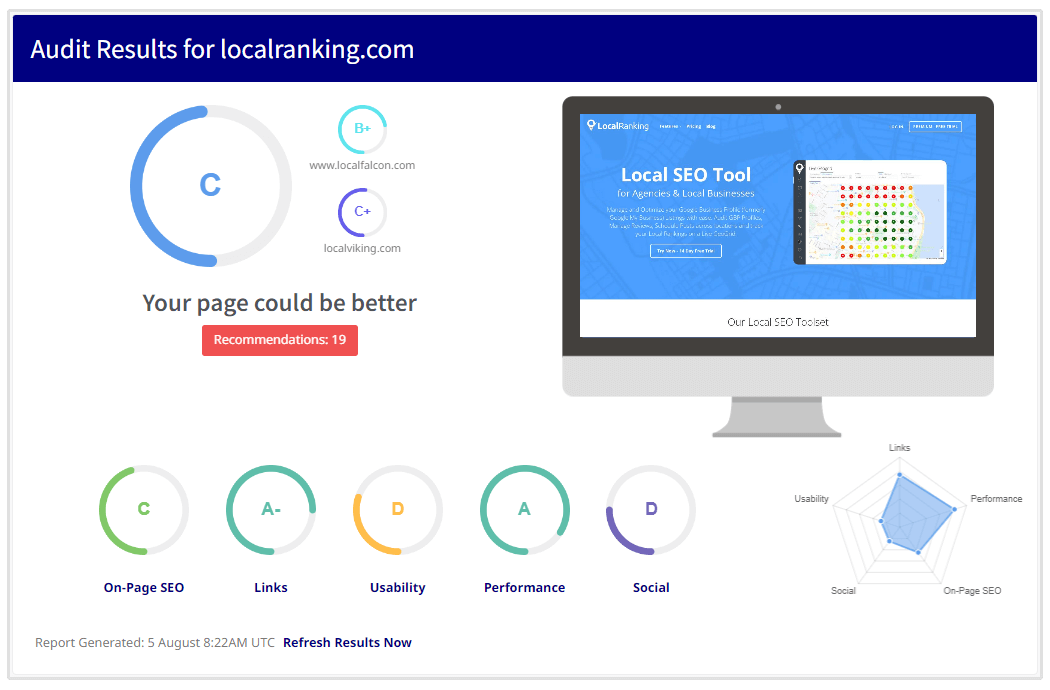
You can also schedule to run reports on a weekly or monthly basis in order to keep an eye on how your SEO is improving over time.
Companies should conduct these audits to understand where they fall short and then prioritize fixes, which will have a greater impact on their search engine ranking positions.
- Brandon Schroth, Reporter Outreach
6. Leverage Social Media
While social media may not have a direct impact on SEO rankings, it plays a vital role in creating a well-rounded digital marketing strategy.
Social media platforms are effective tools for increasing brand awareness, driving traffic to your website, and engaging with your audience.
By leveraging social media, you can amplify your content's reach and create opportunities for organic backlinks, which can indirectly benefit your SEO efforts.
Here are some things you can do to leverage social media for SEO:
- Share snippets or teasers of your blog posts on social media with a call-to-action that encourages users to visit your website for the full article.
- Share positive customer testimonials and reviews on your social media profiles to build social proof and credibility.
- For businesses with a physical presence, use location tags and geo-targeted posts to attract local customers and improve your local SEO efforts.
- Engage with influencers and industry leaders on social media. Building relationships with these individuals can lead to backlinks from their websites or social shares of your content.
Engaging with your audience on social media and relevant forums can drive traffic and build brand authority. I actively participate in discussions, share my expertise, and promote my content across platforms like LinkedIn, Twitter, and niche-specific forums.
- Josh Bolstad, Niche Ranker
What Not to do to Rank in a Competitive Niche
Now that you know what to do to rank in a competitive niche, let's look at some of the things you should definitely avoid.
Keyword Stuffing

It might make sense to try and use the target keyword as much as possible in order to rank in a competitive niche, but this is a big misconception, especially amongst beginners.
Keyword stuffing is the process of overloading your content with keywords in an attempt to manipulate search engine rankings. This not only looks unnatural but also diminishes the user experience.
Search engines like Google are sophisticated enough to recognize and penalize this tactic, which can harm your site's credibility and ranking.
Instead of focusing on sheer keyword frequency, prioritize creating high-quality, valuable content that naturally incorporates your target keywords. This approach enhances readability, user engagement, and ultimately, your SEO performance.
Buying Links
Buying links may seem like a quick fix to boost your rankings, but in the long run, this tactic is unsustainable and risky.
While it might offer a temporary boost, the costs can quickly spiral out of control as you try to maintain and grow your link profile.
More importantly, buying links goes against Google's policies and can lead to severe penalties, including ranking drops or even deindexing from search results.
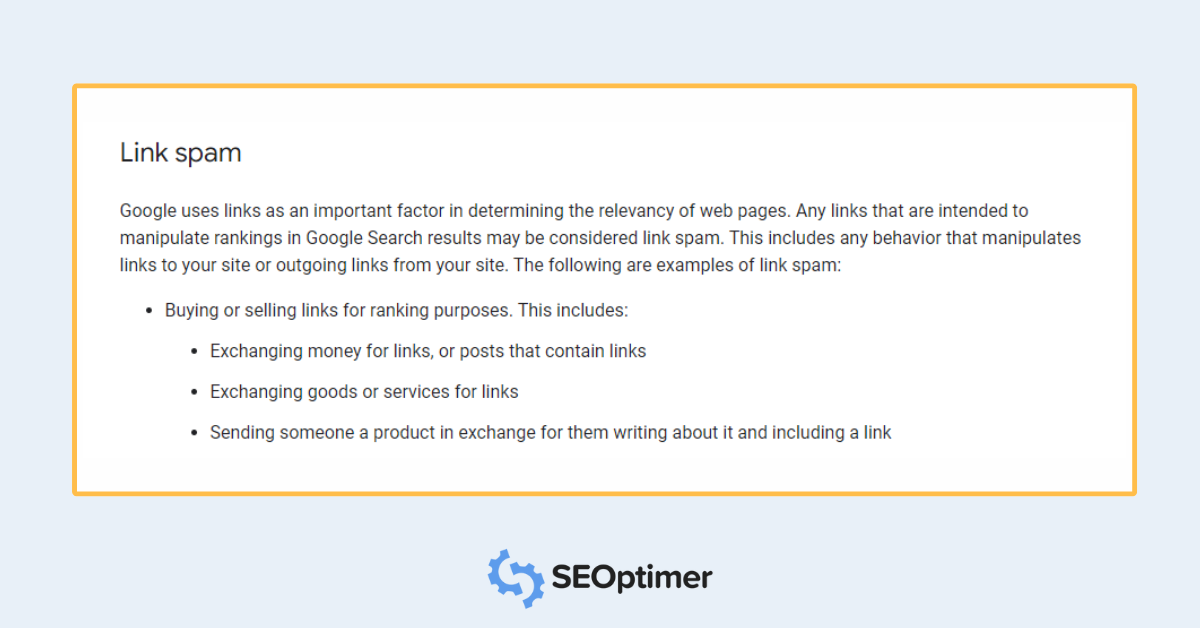
Investing in legitimate link-building strategies, such as creating high-quality content that naturally attracts backlinks, building relationships with influencers, and engaging in guest blogging, is a far more sustainable and effective approach.
This not only aligns with best practices but also builds a solid foundation for long-term SEO success.
Forgetting About User Experience
Forgetting about user experience is another crucial mistake to avoid.
Google aims to provide users with not only accurate answers but also a seamless, enjoyable browsing experience. This means that sites must load quickly, be easy to navigate, and offer valuable, engaging content.
Here are the things Google looks for when evaluating a website's user experience:
- Page Load Speed: Slow-loading pages frustrate users and lead to higher bounce rates. Google prioritizes fast-loading websites in its rankings.
- Mobile-Friendliness: With the rise of mobile internet usage, Google uses mobile-first indexing, meaning your site must be fully optimized for mobile devices.
- Easy Navigation: A clear, intuitive navigation structure ensures users can easily find the information they need, improving their overall experience.
- Engaging Content: High-quality, relevant, and engaging content keeps users on your site longer and encourages repeat visits.
- Secure Browsing (HTTPS): Security is a key factor in user experience. Sites using HTTPS are seen as trustworthy and more likely to rank higher.
A common way to quickly assess your site's user experience is by running a Core Web Vitals check.
Along with checking your website's technical and on-page SEO, SEOptimer also audits your site's performance metrics, including Core Web Vitals.
By prioritizing your website's user experience, you align your website with Google's priorities, thereby improving your chances of ranking higher in competitive niches.
Conclusion
By focusing on ethical, user-centric strategies, you’ll build a strong foundation for long-term growth and increase the odds of ranking in a competitive niche.
Remember, sustainable SEO requires patience, dedication, and continuous optimization.













